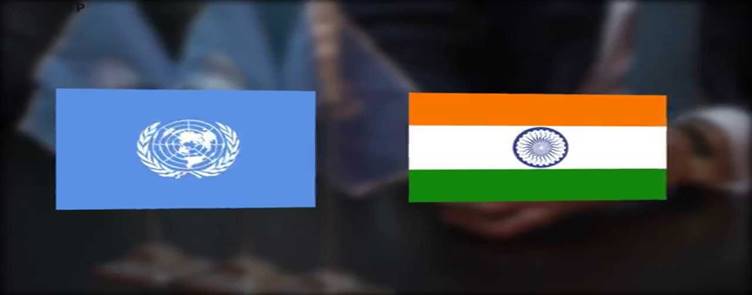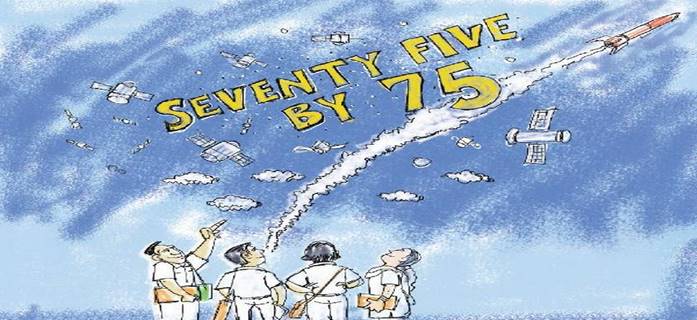DAILY NEWS ANALYSIS 27 JUNE
54 Nations back India for UNSC non-permanent seat
News Important for – General Studies – 2 I International Relations I Bilateral, regional and global groupings and agreements involving India.

Context
India has won the support of 54 countries at the UN for its non-permanent seat at the UNSC for 2 year term of 2021-22.
About
- All 55-member countries of Asia-Pacific group supported India at the UN.
- They also get to nominate one of its members for the June 2020 elections to a non-permanent seat on the UNSC.
- In a surprise move China and Pakistan both supported India at the UN for its non-permanent seat.
- No other challenges by UN members to are expected further with regard to the India’s permanent seat.
- India will need the vote of two-thirds of the 193 UN General Assembly members to win a non-permanent seat on the UNSC.
- This is a major victory of India’s soft diplomacy and its initiatives in the subcontinent.
- India held a non-permanent seat on the UNSC for seven terms: 1950-1951, 1967-1968, 1972-1973, 1977-1978, 1984-1985, 1991-1992 and 2011-2012.
- It announced its candidacy for the 2021-22 seats at the end of 2013.
- Afghanistan withdrew the nomination to accommodate India’s candidacy based on the “long-standing, close and friendly relations” between the two countries, as per what Afghanistan’s UN mission had said at the time.
- India will also be celebrating its 75th Independence anniversary in 2021-2022.
- India will also host the G-20 meeting in New Delhi in 2022.
|
United Nations Security Council
Members
|
Way forward
- India was among the founding members of United Nations, a long-term member of G-77 and G-4.
- It is the second largest and a one of the largest constant contributors of troops to United Nations Peacekeeping missions and is a member of UNSC from 7 years.
- Thus a permanent membership is a reward of its stable engagements.
Source link:
SEZ Bill cleared amid protests
News Important for – General Studies – 3 I Economic Development, Infrastructure
Context
The Lok Ssbha has passed the Special Economic Zones (Amendment) Bill, 2019, accepting the grant of permission to set up a unit in special economic zones.
About
- The Bill replaces an ordinance aimed at encouraging more investments and introducing features as single-window clearance to ease imports and exports.
- It also aims to attract both domestic and international investors.
- Features as adding alternative investment funds trust in the definition of persons is introduced.
Important provision of the bill
The bill aims to amend the definition of “person”, as defined in sub-section (v) of section 2 of the Special Economic Zones Act, 2005:
- To include a trust.
- To enable the setting up of a unit in a Special Economic Zone by a trust.
- To provide flexibility to the Central Government to include in this definition of a person, any entity that the Central Government may notify from time to time.
|
Special Economic Zones Special Economic Zones (SEZs) are geographically delineated ‘enclaves’ in which regulations and practices related to business and trade differ from the rest of the country and therefore all the units therein enjoy special privileges. |
Source link:
India and U.S. resolve to work through their trade differences
News Important for – General Studies – 2 I International Relations I Bilateral, regional and global groupings and agreements involving India.
Context
India and U.S. look forward to solve the issues related to trade differences.
Analysis
- Both countries have talks about issues as tariffs and counter-tariffs imposed by India and U.S. on each other, U.S.’s concerns with India’s proposed laws on e-commerce and data localisation, on price caps, removal of trade barriers and market access.
- However, no discussion the U.S. decision to withdraw India’s GSP preferential trade status this month was held.
- Other issues such as energy, defence, investment concerns and people-to-people contacts, as well as the growing conflict in the Gulf with Iran and the peace process in Afghanistan.
- Issues such as the purchase of S-400 from Russia have been declared to be taken in national interest.
- India even raised concerns about its zero imports from Iran hampering its energy security and terror financing of the country being not in global interest.
Source link:
75 student satellites may fly to space as India turns 75
News Important for – General Studies – 3 I Science and Technology- developments and their applications and effects in everyday life.
Context
In the year 2022 ITCA has planned to fly 75 tiny satellites by students to celebrate India’s 75th independence anniversary and launch of gaganyaan.

About
- The Indian Technology Congress Association (ITCA), a technology promotion body based in Bengaluru, has included around 40 engineering colleges for the plan.
- It is also planning to fetch Israeli finance for its ambitious project.
- The satellites consist of Nano satellites weighing between 3 and 12 kg.
- Which demonstrate a novel concept, science experiment, or technology in orbit.
- A student satellite, depending on its payload, can cost between ₹30 and ₹50 lakh and ₹5 and ₹6 crore.
- The students will assemble a satellite of their own, create its ground control system, and operate the spacecraft for a creative experience and an edge in the job market.
Reason for appointing school students for the project
- Students are an important part of the country and provide interesting ideas for applying to everyday life.
- For the students it is an out-of-the-world learning experience, exposure to an elite job market, and a chance to turn entrepreneurs who can attract space majors, with frugal satellite services.
- Space-based solutions reach people in remote areas where many other technologies do not reach or work.
- Students here learn to design small satellites that can offer simple, meaningful, and low-cost solutions to soldiers, farmers, boats men, forest personnel, or students, he noted, adding that these days ISRO wants to offload satellite assembly to the private sector.
Way forward
- In the last three to five years, other countries have launched about 3,500 student satellites demonstrating innovative technologies.
- Indian universities have so far built and launched only 9 satellites of fleeting lifespans.
- They must catch up with their international counterparts.
- This is an innovative step in this direction.
Source link:
Centre set to roll out ‘Jal Shakti’ scheme for water-starved areas
News Important for – General Studies – 3 I Important aspects of governance
Context
The central government has come up with Jal Shakti Abhiyan to strengthen up rain water harvesting and conservation efforts in water-stressed districts
Highlights of the project
- Water being a State subject
- The campaign is on the model of Gram Swaraj Abhiyan, where central officials monitored the implementation of seven flagship development schemes in 117 aspirational districts across the country.
- The campaign is planned from July 1 to September 15.
- It will take place in States receiving rainfall during the south-west monsoon.
- States receiving rainfall in the retreating or north-east monsoon would be covered from October 1 to November 30.
- Overall, 313 blocks with critical groundwater levels would be covered, along with 1,186 blocks with over-exploited groundwater and 94 blocks with low groundwater availability.
- Teams led by Joint Secretary and Additional Secretary-rank officers and Deputy Secretary-level officers from various central ministries would fan out across the country, making at least three trips of three days each to cover their allocated districts and blocks.
- Scientists and IITs would provide technical support, while national NGOs would aid in community mobilisation.
- State- and district-level officials would also join these teams on the ground.
- Progress would be monitored in real time through mobile applications and an online dashboard at indiawater.gov.in.
- Block and district-level water conservation plans would be drafted, and Kisan Vigyan Kendras would hold melas to promote better crop choices and more efficient water use for irrigation.
- A major communications campaign on TV, radio, print, local and social media would be carried out, with celebrities mobilised to generate awareness for the campaign.
Objective of the project
- The Jal Shakti Abhiyan aims to accelerate water harvesting, conservation and borewell recharge activities already being carried out under the Mahatma Gandhi National Rural Employment Guarantee scheme and the Integrated Watershed Management Programme of the Rural Development Ministry.
- It will also work to restore water bodies and afforestation schemes being undertaken by the Jal Shakti and Environment Ministries.
Source link:
India in talks to restore U.S. concession
News Important for – General Studies – 2 I International Relations I Bilateral, regional and global groupings and agreements involving India.
Context
The Government of India is negotiating with the U.S. on the issue of withdrawing Generalized System of Preferences status.
About
- The objective of GSP is to give development support to poor countries by promoting exports from them into the developed countries.
- It promotes sustainable development in beneficiary countries by helping these countries to increase and diversify their trade with the United States
- GSP provide opportunities for many of the world’s poorest countries to use trade to grow their economies and climb out of poverty.
- While India exported over $50 billion or about ₹4 lakh crore, GSP benefits were given to an export basket worth ₹42,000 crore.
|
Generalized System of Preferences (GSP) The Generalized System of Preferences (GSP) is a U.S. program to promote economic growth in the developing countries by providing preferential duty-free entry for up to 4,800 products from 129 designated beneficiary countries and territories. |
Source link:



1.png)
